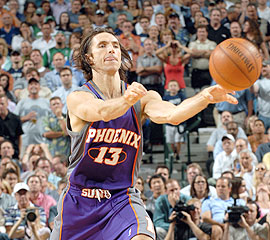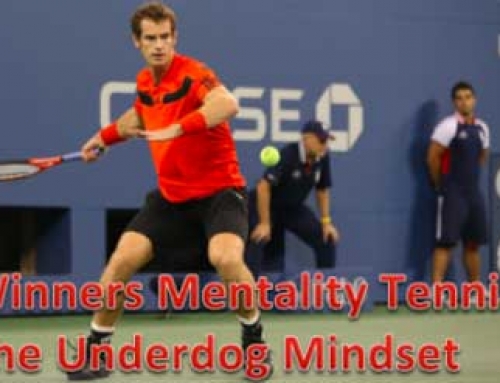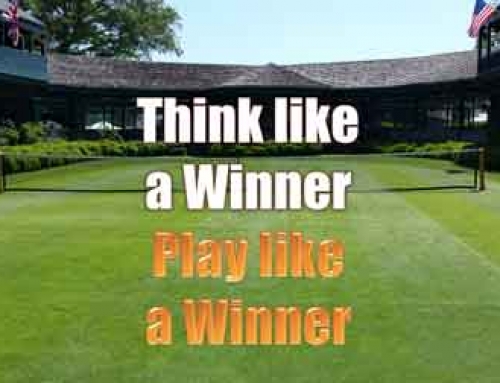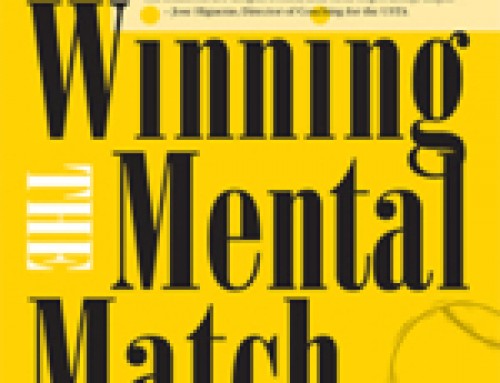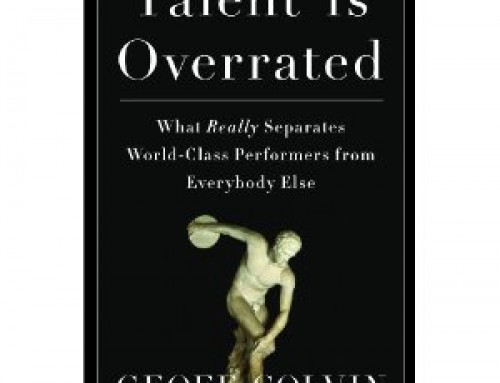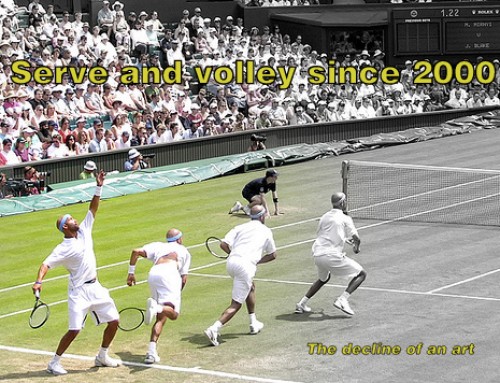I recently read an article in Sporting News magazine about All-Star NBA point guard Steve Nash. The article focused on various aspects of Steve’s game that make him a great player and included several quotes from Steve. After reading the article, I realized that many of Steve’s quotes could be useful to those of us who play recreational tennis. In this post I will highlight several of Steve’s quotes from the article and relate them to recreational tennis.
VISION
“(Basketball) is a lot of quick bursts, it’s unpredictable, and it’s multidirectional. (Vision) helps me see how guys move, and helps me as far as anticipating where everyone will be.”
Tennis is also a game that has a lot of quick bursts, unpredictability, and multidirectional action. Having good vision and anticipation are keys to playing winning tennis at any level.
PACING
“(Proper movement means) moving with a purpose, doing everything with a purpose – a basketball-related purpose. To be successful, I have to use change of direction, I have to use my balance, I have to use my coordination, I have to use my own advantages.”
The essence of good tennis footwork is contained in this quote. Good tennis footwork requires the ability to change direction, move with a purpose, while maintaining coordination and balance. As Steve says elsewhere in the article, there is a misconception that athleticism equals explosiveness. It is not necessary to have explosive speed to be a great mover on the tennis court.
ENDURANCE
“I work hard at it. I spend a lot of time getting treatment, having (the training staff) look at how I am moving and giving me corrective exercises to keep me going. When I was younger, it was a little easier – you recovered faster, you put in your off-season work and then sort of go from there. But now, it is a whole-season thing.”
Fitness is vitally important for both tennis and basketball players. Tennis players would do well to emulate Steve’s year-round approach to fitness. Putting in the time and work necessary to maintain and strengthen the body will pay great dividends during a match.
SHOOTING
“How I do it? Years of practice. That’s the short answer. But I don’t necessarily practice my shot (a lot). I did that when I was younger, but nowadays, I try to shoot 15 to 45 minutes four days a week. I know what my shot should feel like. I have taken thousands of shots. If I didn’t know my shot by now, I would be in trouble.”
“For me, it is more physical work, to have the legs and technique and the ability to repeat my motions, the correct motions over and over. Leg strength is something that is so important for shooting because you need to have the same form on your shot no matter what. And rhythm. (Now) when I practice my shot, it’s more just staying sharp just to keep my rhythm.”
You could substitute the word “serve” for “shot” in the preceding quote and it would be excellent advice for all tennis players. Have you ever seen video of Federer practicing his serve? Federer is always relaxed and smooth while he works on maintaining the rhythm that Steve talks about in this quote. Serving with a smooth, consistent, repeatable motion is far more important than speed for recreational tennis players.
PASSING
“Passing is a feel thing. I don’t sit and study films on it. I just have a feeling for a teammate and how he plays and where he likes to receive the ball. It becomes second nature with everyone you play with. (The important thing is) having feel, having your eyes open and your head up and knowing who you’re playing with.”
This idea of keeping your head up, eyes open and being aware of what’s going on at all times is essential to winning a tennis match. During every point it is vital for recreational tennis players to observe the location and activity of the player(s) across the net in order to 1) move properly, 2) anticipate the incoming shot, and 3) decide where to hit the next shot.
Recreational tennis players can learn a lot from an NBA star because concepts such as balance, awareness, anticipation, and feel apply across sports.



